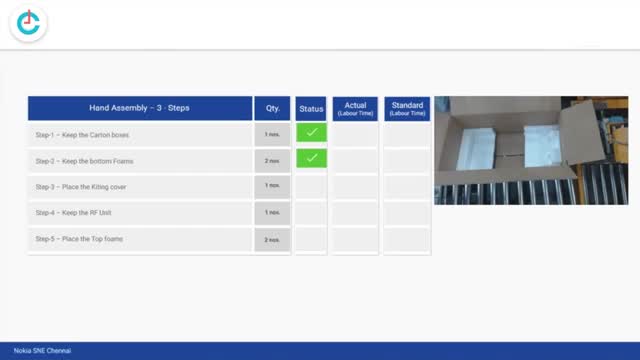Premium Only Content

Developers
There are numerous legitimate ways of getting sorted out a task. Here we suggest a couple of normal methodologies for ventures of various sizes, however in case you're now acquainted with web development, you can arrange your task the same way you would for a web application.
When our application is smal, we frequently keep all parts in a solitary catalog.
By and large, every part in our application ought to live in a different document, and ought to be the default commodity of that record. We give the record a similar name as the part, for example a part called Avatar ought to live in Avatar.js. In React Native, part names should be promoted, so the record name will typically be promoted too for consistency.
In the event that you're beginning a shiny new application and you don't know how enormous it will be, beginning here and allowing it to develop normally is fine! On the off chance that you know it will be a monstrous application (for example Facebook, WeChat) with various groups of developers contributing code, consider picking the enormous undertaking design in any case.
As our application develops, we'll ordinarily separate "screen" parts into a screens catalog, and start further arranging documents inside the parts registry. A "screen" part should take up the full screen, for example, a Profile screen or a Settings screen.
Assuming we're utilizing a library like react-route, we might put together our pilots/switches into a different route catalog (likewise now and then guides or steering).
A couple of other normal classes of record:
programming interface: network API calls, regularly coordinated by supplier or course
resources: pictures and different records to package with the application
snares: custom snares
reducers: reducer capacities, for overseeing application information with the useReducer snare (or another library)
subject: shared shadings and text styles (once in a while called styles)
utils: various apparatuses like string arranging
At the point when an undertaking develops to incorporate a wide range of elements or UI streams, it's normal to classify records by include at the high level. In case different groups are chipping away at the application, the component names will oftentimes line up with the group names: for example accounts, development, protection.
The component indexes are regularly gathered under a modules, bundles, or applications catalog. Parts or utilities that are divided among different elements/groups will frequently be in a unique common or center index inside that, and treated as a public API. An element should just reference records inside its own index or the common registry, never a document inside another component catalog — that is an indication that the document is a possibility for moving to shared and thinking of it as a public API.
This venture structure intends to plainly portray for each document: where it ought to reside, who keeps up with it, and regardless of whether it's permitted to be brought into different elements.
In React Native, the part is the main structure square of our UI. A few systems separate ideas like "perspectives" and "regulators", yet React doesn't authorize a particular example. It's dependent upon us to conclude what reflections we need.
One normal deliberation is to isolate presentational and compartment parts.
Compartment parts contain application/business rationale. They're typically recently called "holders". You may likewise hear "brilliant parts", or every so often, "view regulators" (despite the fact that they may not be absolutely closely resembling conventional view regulators).
Compartments know about the information and rationale extraordinary to your application. Compartments pass information and callbacks as props to presentational parts, and handle refreshing the information when a client interfaces with the application. Compartments shouldn't deliver center parts like Text or Image - that is the obligation of presentational parts.
Presentational parts render the apparent UI, and ought not contain any application-rationale. In a perfect world, their main information is their props, so they could be utilized in an alternate application with practically no significant change. Presentational parts are regularly alluded to as "parts", in constrast with "holders".
In case your organization has various applications, it very well might be significant to divide code among applications. Commonly, you would begin by dividing presentational parts among applications, since they're as of now separate from any application rationale, and consequently sharing them ought to be generally simple.
In the medium-sized venture model document structure over, our screens catalog contains our "compartment" parts, while parts contains our presentational parts. Assuming we needed compartment parts that didn't address whole screens in the application, yet rather parcels of a screen (that may be divided among various screens), we may furthermore make a holders registry. For consulting, hire react native developer https://www.cronj.com/hire-react-native-app-developers.html
-
 22:38
22:38
Professor Nez
1 hour agoTrump Just Made his MOST IMPORTANT Decision as President
4.82K5 -
 LIVE
LIVE
The Shannon Joy Show
1 hour agoWar With Venezuela * Bipartisan Push For Digital ID For Children * LIVE Exclusive Interview With Freedom Advocate Alec Zeck
237 watching -
 LIVE
LIVE
The Mel K Show
1 hour agoMORNINGS WITH MEL K - America at a Crossroads-Are the People Awake Yet? 12-2-25
663 watching -

Grant Stinchfield
1 hour agoGov. Tim Walz Scandal EXPLODES: Millions in Minnesota Fraud Linked to Overseas Terror Groups
6813 -
 LIVE
LIVE
LFA TV
15 hours agoLIVE & BREAKING NEWS! | TUESDAY 12/02/25
3,847 watching -
 1:00:17
1:00:17
VINCE
4 hours agoThe Truth Behind Those Drug Boat Strikes | Episode 179 - 12/02/25 Vince
177K138 -
 2:27:47
2:27:47
Nikko Ortiz
2 hours agoThe Coldest Place On Earth... | Rumble LIVE
18.3K1 -
 2:07:19
2:07:19
Badlands Media
12 hours agoBadlands Daily – December 2, 2025
75.9K15 -
 LIVE
LIVE
Viss
2 hours ago🔴LIVE - The Arc Raider Duo That Changed Everything - Viss w/ Hambino
159 watching -
![[MnK] Let's Dominate Solo Lobbies](https://1a-1791.com/video/fwe2/07/s8/1/Y/4/Q/E/Y4QEz.0kob-small-MnK-Lets-Dominate-Solo-Lobb.jpg) LIVE
LIVE
GloryJean
2 hours ago[MnK] Let's Dominate Solo Lobbies
114 watching